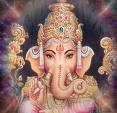Ayurveda and yoga are sister sciences. In India, it was traditional to practice ayurveda before taking up the study of yoga.
Because ayurveda is the life-science of body, it was a physical, conditioning system in preparation for the mental-spiritual science of yoga. To date, utilizing yoga asana as ayurvedic treatment requires a grasp of both discipline’s unique qualities. Hopefully, through the depiction of both differences and similarities, misuse of either is eliminated. By demonstrating the proper application of asana within the ayurvedic model, may optimum benefit be realized. B.K.S. Iyengar clarifies the difference between Ayurveda and yoga stating that yoga adopts a psycho-spiritual approach and ayurveda a psycho-physiological approach.
The cause of diseases, according to yoga, is the fluctuation of mind or chitta.
For ayurveda, diseases are attributed to an imbalance in the constituents of the body. As many people may lack the life-force (prana) or potency required to manage stress and fight disease, ayurveda primarily treats through nutritional practice and herbal remedy as well as many other upaya. Ayurveda begins with the body, and yoga begins with consciousness. Both serve to keep the body healthy, and both are moksa-satras, or sciences of liberation however may begin from different starting points. Both yoga and ayurveda consider life a psycho-somatic-spiritual phenomena.
Both yoga and ayurveda aim at an end to suffering while maintaining health so that the four goals of life: dharma, artha, kama and moksha may be realized.
David Frawley defines yoga as first, a science of self-realization as compared to ayurveda as primarily a science of self–healing, aimed at relieving the diseases of the body and mind. For Frawley, yoga is considered the science of spirituality while ayurveda is understood as practice, purifying and maintaining health in the body. “Ayurveda works at healing and purifying the body and mind while yoga aims at taking us to self-realization, which depends upon a purified body and mind. In this way, the foundation of yoga should be ayurveda and the fruit of Ayurveda should be yoga”. Vasant Lad identifies yoga a science of communion (union with ultimate being) and ayurveda as science of daily living. The following list helps to clarify the different approaches.
Yoga
Consciousness
Self-realization
Psycho-spiritual
Ayurveda
Body
Self-healing
Physical-physiological
Where is the overlap between these two ancient practices and how do they serve each other?
Dr. Lad provides insight saying, “When yogis perform certain postures and follow certain disciplines, they open up and move energies which have accumulated and stagnated in the energy centers. When stagnant, these energies create various ailments. Yogis may temporarily suffer physical and psychological disorders because in the course of yogic cleansing of the body, mind and consciousness; disease-producing toxins are released.
By employing ayurvedic diagnosis and treatments, the yogis deal effectively with these disorders” What are the ayurvedic diagnosis and treatment which yoga shares? In Ayurveda and Yoga Therapy, Dr. Ranade explains, “Both ayurveda and yoga are based in the trigunas (sattva, rajas, tamas), and the theory of the (mahabhutas), great five elements. They both use humor–tissue-waste material theory (dosha-dhatu-mala) for understanding the working of the body, and the taste-energy, post digestive effect concept (rasa-veerya-vipaka) for understanding the effects of food and medicines. Initially both these sciences have eight branches “Ashtanga-yoga” and “Astanga-Ayurveda”.
The five elements are space, air, fire, water and earth and are known as tattvas in Samkhya philosophy. Samkhya is one of six classical Hindu schools of thought, which is concerned with the classification of the various principles (tattva) or categories of existence. Ashtanga-yoga refers to eight yogic practices or limbs from Pantanjali’s Yoga-Sutras while Astanga-Ayurveda refers to the eight branches of ayurveda. Specifically, classical yoga is compromised of eight limbs; the ayurvedic system of medicine, according to Sushruta-Samhita is divided into eight branches.
Astanga-Yoga
1. Yama
2. Niyama
3. Asana
4. Pranayama
5. Pratyahara
6. Dharyana
7. Dyana
8. Samadhi
Astanga-Ayurveda
1. Surgery
2. Neck & Head disease
3. Torso, Arms & Legs disease
4. Childhood disease
5. Counteracting occult influence
6. Toxicology
7. Rejuvenation /Rasayana
8. Revitalization/Vajikarana
We see that yoga and ayurveda both utilize the Samkhya as a philosophical base while ayurveda shares the moral and ethic conduct outlined in Pantanjali’s Yoga-sutras. Because of the similarity between the Astanga-yoga and Ashtanga-Ayurveda, some experts have suggested that Pantanjali and Charaka is the same person however George Feuerstein, Ph.D., in The Yoga Tradition disputes the claim, “The formal similarity between ayurveda and Pantanjali’s eightfold yoga remarked on by the Hindu authorities is purely coincidental however some traditional authorities have paid attention to this parallel. It should be mentioned that some of the ancient Sanskrit commentators believed that the same Pantanjali who composed the Yoga-Sutras also wrote a famous treatise on grammar and one medicine”. Within the Samkhya philosophy are the concepts of guanas and doshas which yoga and ayurveda share. Doshas are mentioned within the yoga system according to Feuerstein, ”The doshas are often referred to in the literature of Hatha-Yoga, which is concerned with optimal functioning of the body.
Health is deemed a matter of the proper balance between the bodily constituents.
These exist throughout the body but are present in different concentrations at various places. Thus vata is preeminent in the nervous system, heart, large intestine, lungs, bladder and pelvis. Pitta predominates in the liver spleen, small intestine, endocrine glands, blood and perspiration. Kapha in the joints, mouth, head and neck, stomach and lymph and adipose tissue. Vata accumulates below the navel, kapha above the diaphragm and pitta between the diaphragm and the navel.
Yoga
Samkhya
Gunas
Dosha
Pantanjali’s Yoga-Sutras
Ayurveda
Samkhya
Gunas
Dosha
Sushruta-Samhita
Asana is the third practice within Pantanjali’s eight–limbed system. However, Pantanjali mentions asana specifically in only one sutra.
II. 46 Asana is perfect firmness of body, steadiness of intelligence and benevolence of spirit.
The placement, half-way into the The Yoga Sutras and the brevity of this sutra indicates that there is a great amount of preparation proceeding asana practice just as asana is intense preparation for the deeper practices within Yoga.


No comments yet.